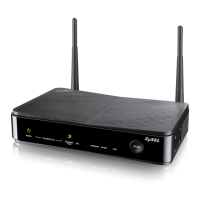
Do you have a question about the ZyXEL Communications SBG3300-N series and is the answer not in the manual?
| Wireless Standard | 802.11n |
|---|---|
| Wireless Speed | 300 Mbps |
| Frequency Band | 2.4 GHz |
| Firewall | Yes |
| VPN Support | Yes |
| Product Type | Gateway |
| LAN Ports | 4 |
| Security Features | WPA, WPA2 |
| Antenna | 2 x External |
General overview of the SBG3300-N Series, its capabilities, and connection types.
Describes methods for managing the Device, including Web Configurator and TR-069.
Explains the function and description of each LED indicator on the Device.
Instructions on how to use the RESET button to restore factory default settings.
Introduction to the HTML-based management interface and its requirements.
Step-by-step guide on how to launch and log into the Web Configurator.
Overview of the main components of the Web Configurator interface.
Describes the purpose of Quick Start screens for device configuration.
Guides users through the initial setup wizard for time zone, Internet, and wireless settings.
Explains the purpose of the Status screen for viewing device and system information.
Details the information displayed on the Status screen, including device and system status.
Introduction to Broadband screens for configuring Internet access.
Defines key terms and concepts relevant to broadband setup, like Encapsulation and WAN IP Address.
Describes how to change Internet access settings and view configured WAN services.
Introduction to Wireless screens for setting up the Device’s wireless connection.
Configuration of Wireless LAN, SSID, and wireless security mode settings.
Allows or denies wireless clients access based on their MAC addresses.
Configuration of WiFi Protected Setup (WPS) for quick wireless network setup.
Definition of Local Area Network (LAN) and its purpose.
Setting the Local Area Network IP address, subnet mask, and DHCP settings.
Configuration of UPnP settings for automatic network device discovery and configuration.
Explanation of how the Device uses default gateways and static routes for traffic.
Viewing and configuring static route rules on the Device.
Configuring policy routing to override default behavior and alter packet forwarding.
Explanation of Quality of Service for delivering data with minimum delay and controlling bandwidth.
Enabling/disabling QoS and setting upstream bandwidth.
Adding, editing, or deleting QoS classifiers to group traffic.
Introduction to Network Address Translation (NAT) and its purpose.
Forwarding incoming service requests to local network servers.
Allows computers to dynamically take turns using a service via trigger ports.
Configuring a default server to receive packets not specified in Port Forwarding.
Explanation of DNS and Dynamic DNS for updating IP addresses with domain names.
Enabling DDNS and configuring Dynamic DNS settings for the Device.
Explanation of interface groups and VLANs for creating new LAN bridge interfaces.
Adding LAN interfaces to groups or automatically adding traffic based on DHCP vendor ID.
Overview of USB port usage for file sharing via USB memory sticks or hard drives.
Enabling and configuring file sharing for USB devices connected to the Device.
Introduction to firewall settings for protecting the Device and network.
Configuring basic firewall settings for permitting or dropping traffic between security zones.
Customizing services and port numbers for comprehensive firewall rule configuration.
Viewing and configuring incoming or outgoing filtering rules for network traffic.
Permitting client access based on MAC addresses for wired and wireless connections.
Allowing wireless and LAN clients access to the Device by configuring MAC filter settings.
Blocking specific web sites via URL and defining time periods for User Access control.
Enabling User Access control and viewing rules and schedules.
Configuring restricted access schedules and URL filtering to block specific web sites.
Defining time periods and days for scheduled rules on specific users.
Viewing, adding, or editing time schedule rules for features like Firewall and User Access Control.
Using certificates for user authentication based on public-private key pairs.
Generating certification requests and importing CA-signed certificates.
Saving certificates of trusted Certification Authorities to the Device for trustworthiness.
Introduction to Virtual Private Networks (VPNs) and IPSec for secure data communications.
Explains the main fields for configuring IPSec VPN tunnels.
Adding or editing VPN policies and tunnels for secure connections.
Overview of the overall IPSec architecture, including protocols and algorithms.
Introduction to Point-to-Point Tunneling Protocol (PPTP) for secure data transfer.
Configuring PPTP VPN server settings, including IP address pool and authentication.
Explanation of Layer 2 Tunneling Protocol (L2TP) for tunneling network traffic securely.
Configuring L2TP VPN settings, including IP address pool and authentication methods.
Overview of choosing log categories and displaying or sending logs.
Viewing system logs, filtering by severity, and exporting log data.
Accessing security-related logs, including system errors, attacks, and blocked web sites.
Overview of Network Status screens for viewing WAN and LAN interface statistics.
Viewing WAN traffic statistics, including sent and received bytes.
Explanation of Address Resolution Protocol (ARP) for mapping IP to MAC addresses.
Viewing IP-to-MAC address mappings maintained by the ARP table.
Explanation of routing based on destination address and shortest path selection.
Viewing and understanding the device's routing table entries.
Overview of IGMP Status screens for group status and traffic statistics.
Displaying IGMP multicast groups joined and ports participating.
Viewing detailed DSL statistics, including training status, line rates, and counters.
Managing user accounts, including username, password, and access privileges.
Configuring user accounts, retry times, idle timeouts, and login messages.
Adding or editing user accounts with settings for access control and file sharing.
Controls for managing device access through various interfaces and services.
Configuring interfaces, services, and port numbers for remote device management.
Explains TR-069 auto-configuration settings for device management.
Configuring the Device for management by an Auto Configuration Server (ACS).
Configuring SNMP agent functionality for network management and monitoring.
Configuring system-related settings like time, password, and domain name.
Setting the Device’s time and date, including time zone and daylight saving.
Setting up an e-mail server for device reports, logs, and notifications.
Viewing, removing, and adding mail server information for email notifications.
Configuring where the Device sends logs and which alerts to record.
Setting up syslog logging, email notifications for logs, and selecting log categories.
Instructions for uploading new firmware or WWAN packages to update the Device.
Uploading new firmware or WWAN packages to upgrade the Device’s performance.
Overview of backing up, restoring, and resetting device configurations.
Managing device configurations, including backup, restore, and factory reset options.
Clearing all user-entered configuration and returning the Device to its factory defaults.
Information to help identify and diagnose problems with the Device.
Tools for pinging, tracerouting, or performing DNS lookups on IP addresses.
Performing Connectivity Fault Management (CFM) actions for network fault diagnosis.
Troubleshooting issues related to device power, hardware connections, and LED indicators.
Solutions for problems related to forgetting IP addresses or passwords, and accessing the Login screen.
Troubleshooting steps for issues with accessing the Internet, including DSL and second DSL connections.
Identifying factors causing intermittent wireless connections and optimization tips.
Information to have ready when contacting customer support for problem resolution.
FCC compliance information and interference statement for the device.


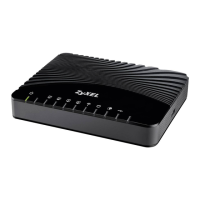

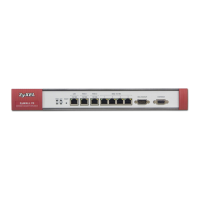
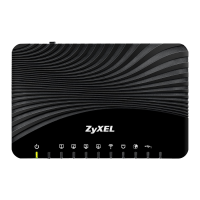
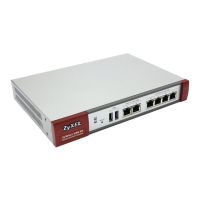
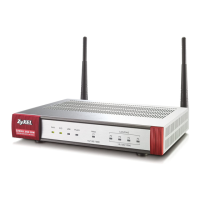

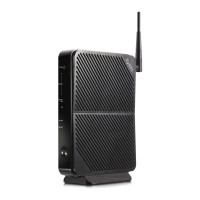


